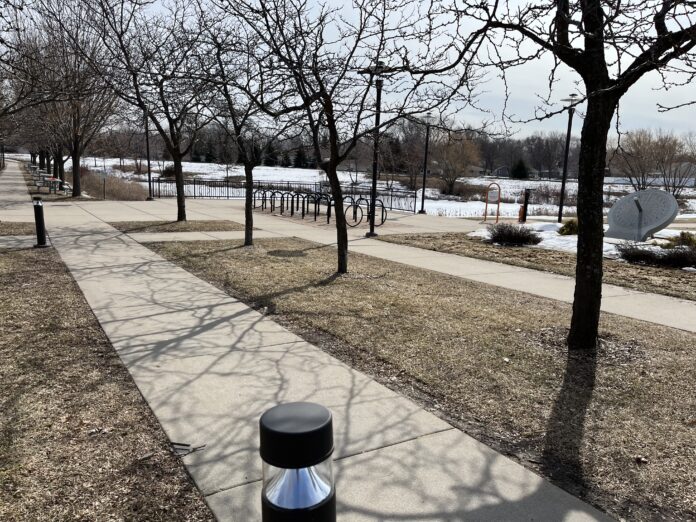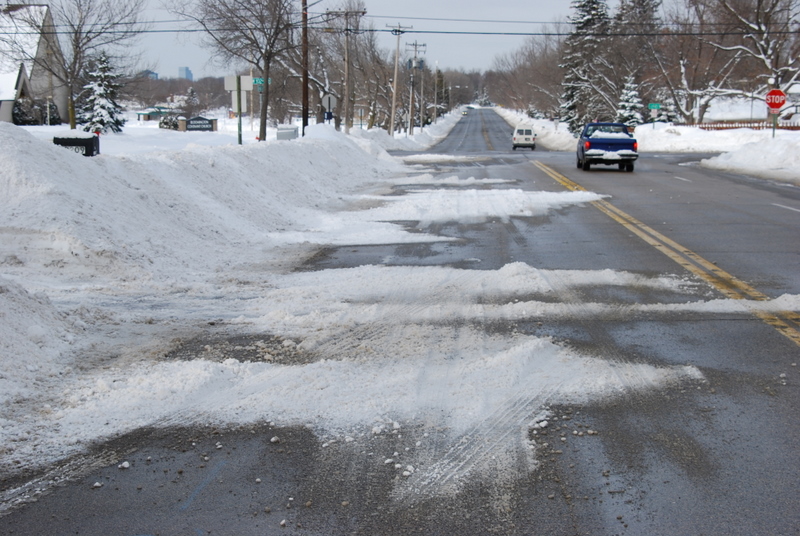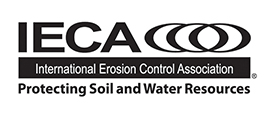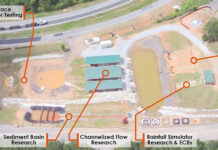
Chloride has promoted itself to a pollutant of top concern in many cold climates and highly populated regions of the world. In the United States, Minnesota annually spends more than $100 million importing road salt for temporary winter safety while accumulating a legacy of damages.1
The Real Cost of Salt
A big penalty is paid when using salt, as it harms infrastructure, soil, vegetation, wildlife and water. Even after salt is long gone from the winter months, chloride remains a permanent pollutant in the environment that affects:
- Soil and Vegetation
Clay soil particles expand when they are exposed to sodium, making it difficult for water to infiltrate the soil and for plants to establish healthy root growth. Shallow root growth leaves plants susceptible to drought and leads to increased erosion. Invasive species that do well in compacted soils, like Canada thistle, crowd out more desirable species, further degrading biodiversity.
Salt-tolerant species and hardscapes have been used to stabilize roadsides. However, these have resulted in a loss of habitat for species that rely on native plants for food, shelter and reproduction. Loss of habitat has pushed several species to become threatened with extinction. - Aquatic Life
As a permanent pollutant, chloride never degrades, it only accumulates. According to the United States Environmental Protection Agency (EPA), chloride is toxic to aquatic life at 230 mg/l. Canada has even stricter chloride standards of 120 mg/l. In cold climates with high expectations for winter safety and mobility, it is a struggle to protect the water.
Introducing Low Salt Design
Combating winter conditions by chemical melting is not sustainable, therefore new strategies are needed.
For decades, winter crews have been encouraged to dial down the salt. However, salt is an important tool against the poor winter performance of the built environment. Roadway safety often requires salt use. Low Salt Design aims to reduce these problem areas. Low Salt Design boosts winter performance of roads and sidewalks by using the sun, outsmarting the wind and considering meltwater drainage.
Connie Fortin, Low Salt Design strategist, has helped Bolton & Menk, Inc. develop the first of its kind in training and certification for Low Salt Design strategies, while making these trainings available to all of the firm’s civil engineers, landscape architects, planners and water resources staff. By listening to winter maintenance professionals and what was needed to improve snowplow conditions, Fortin was able to problem-solve their biggest concerns by integrating science into winter maintenance by considering 10 concepts that reduce the need for salt use. Three of the concepts are:
- Use the sun.
- Outsmart the wind.
- Plan for meltwater drainage.
Use the Sun
Anyone with a south-facing driveway understands the power of this strategy. No salt is needed if the sun shines on the pavement. If there is little winter sunlight to melt snow and ice, much more work and salt are needed to make those surfaces safe. It is a double salt penalty if the low spot of the road resides in the shade, such as under a bridge, or if critical braking, turning or high pedestrian uses are in the shade. Consider the placement and species of trees when using the sun: Conifers provide dense winter shade while deciduous trees provide less winter shade (Figure 1). Winter shade slows pavement recovery and increases the need for salt.
Outsmart the Wind
To outsmart the wind, designers should understand the angle of the winter wind, how many hours it can move snow sitting at rest and the distance the wind travels unimpeded to the site. If there is more than 1,000 feet (about 305 m) of uninterrupted winter wind to the pavement from the direction of the prevailing and frequent strong winter winds, take action. Design in a way to manage the wind and control the snow deposit. Unintentional snow fences break the energy of winter wind by depositing snow onto nearby pavements (Figure 2). These could be snowbanks, shrubs, tall grasses, cattails, fences or a variety of other natural barriers. It is best to control the wind and snow transport before it gets to the pavement, but if that opportunity is missed, it is better to let the wind carry the snow across the pavement than to drop the snow on the pavement.

Drainage
Have you considered the difference between stormwater and meltwater? It seems that designers are masters of stormwater management but novices at meltwater management. For winter maintenance crews, meltwater is a menace — most thaw/freeze cycles create problems for public works. When the snowmelt runs onto pavement it can freeze (Figure 3), and salt is used to treat the area. Controlling the meltwater footprint reduces this problem. Drainage design focuses on controlling the meltwater footprint. One way to disrupt the thaw/refreeze cycle is by placing snow storage on the downhill side of the pavement.

Pay Attention to Critical Areas
Strategies to navigate lower salt use are incredibly useful, but their ultimate value depends on which strategy is used and where it is applied. When examining salt use, it becomes apparent that higher amounts of salt are found in critical areas, such as high-speed roads and superelevated surfaces like highway ramps, bridges and building entries. Critical areas are where traction is important and where maintenance crews do not stop until they reach bare pavement.
In critical areas, we see soil sterilization, difficulty establishing plants, high erosion potential and endless attempts at sediment control. Designing for lower salt is the most cost-effective solution and offers hope of improved soil stability and reduced soil erosion and sediment movement. Improved soil health will advance opportunities to use native plantings that support local biodiversity to reestablish a healthier ecosystem.
Reducing compacted soils and improving soil structure will increase the soil’s ability to infiltrate stormwater and meltwater runoff from impervious surfaces. Healthy root systems will improve the drought tolerance of roadside plants and help anchor soil particles in place, increasing the longevity and effectiveness of plantings. Enhanced plant health further improves the ability of soil to absorb runoff and reduce downstream erosion and flooding.
Low Salt Design should be a standard practice in cold climates. By using Low Salt Design strategies in critical safety areas, communities and winter maintenance professionals get the best return on their investment.
References:
- State Winter Maintenance Data and Statistics. Clear Roads Winter Maintenance Spreadsheet, p. 1–7.
Resources
To learn more about Low Salt Design visit:
- https://podcasts.apple.com/us/podcast/innovating-winter-maintenance-reducing-salt-use-and/id1690618948?i=1000616627972.
- https://sicop.transportation.org/episode-72-designing-in-salt-reduction/.
About the Expert - Connie Fortin, Low Salt Design strategist at Bolton & Menk, has worked for 25 years to reduce salt in the environment. As a low salt strategist at, she is energized and excited to share her passion for integrating low salt concepts into infrastructure design.
- Teresa Burgess, PE, CPESC, is a senior project engineer at Bolton & Menk. Her engineering experience includes in-depth knowledge of many phases of environmental review and hazard mitigation, infrastructure design and project funding.











